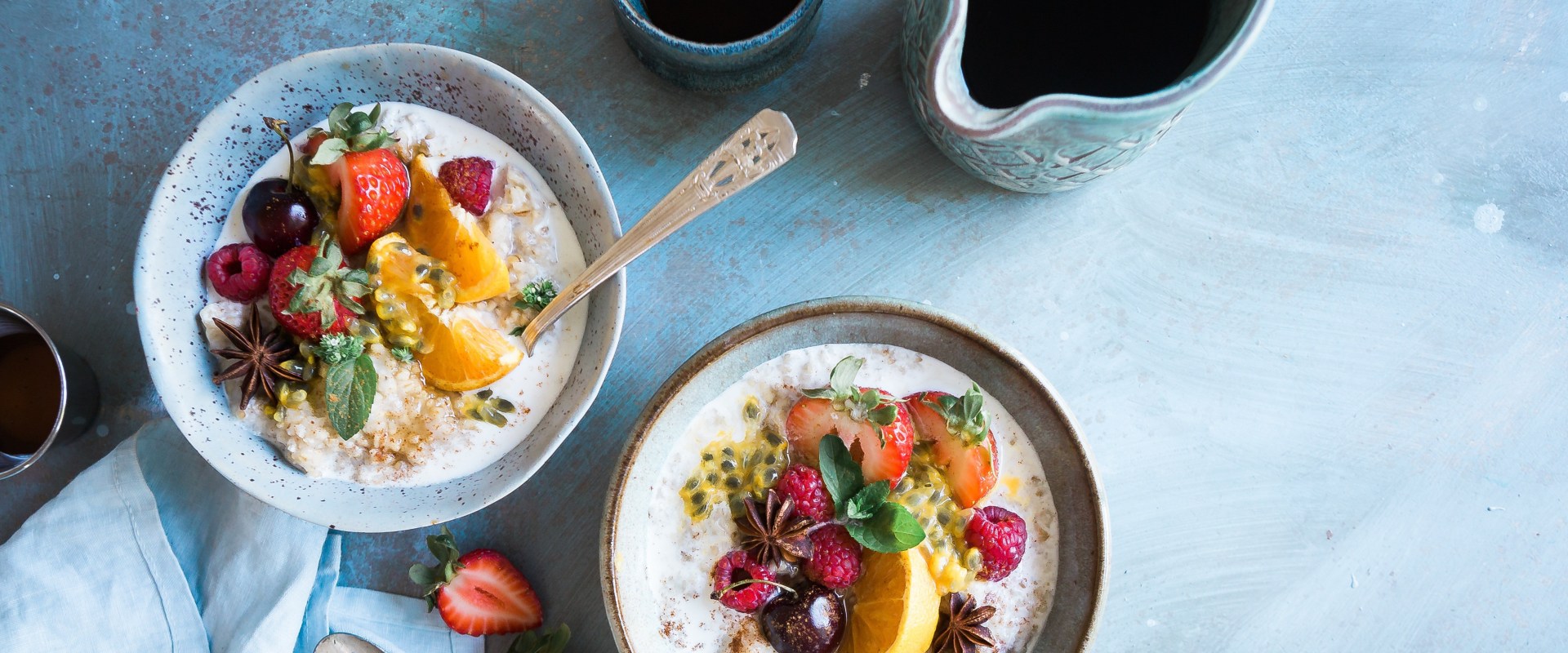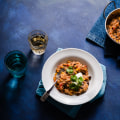Food photography is an art that requires skill and precision. It is the practice of taking photographs of prepared meals in a controlled setting. To get the best results, it is important to have the right props for food photography. In this comprehensive look at the best props for food photography, we will explore what makes them essential, the types of props available, and how to choose the right ones for your needs. While props can be expensive, they are necessary to create a beautiful and eye-catching image.
Props can add texture, depth, and color to an image, making it stand out from the rest. They can also help to capture the essence of a meal, bringing it to life in a photograph. With the right props, you can take your food photography to the next level.
What are Props?
Props are objects used to add context and create interesting compositions in food photography. They can be anything from simple tableware and cutlery to more creative elements like plants, books, and sculptures.Props help to create a story around the food being photographed and can provide a unique perspective or angle.
Types of Props
Props can be divided into two main categories: functional and decorative. Functional props are items that have some direct relation to the food being photographed, such as plates, glasses, and utensils. Decorative props are items that have no direct relation to the food and are used to add visual interest and texture, such as plants, books, and sculptures. It is important to consider both types of props when styling a food photography shoot.Tips for Choosing the Right Props
When choosing props for a food photography shoot, it is important to consider the theme of the shoot and the story you are trying to tell with the images.Consider the colors, textures, and shapes of the props and how they will work together with the food. It is also important to think about the scale of the props in relation to the food; larger objects will draw more attention than smaller ones. For a more subtle look, choose props that are similar in color to the food.
Examples of Props
Examples of functional props for a food photography shoot include plates, glasses, utensils, napkins, tablecloths, serving dishes, cutting boards, and other cookware. Examples of decorative props could include plants, books, art objects, flowers, candles, fabrics, and other textiles.It is important to think about how these objects will interact with the food.
How to Use Props to Create Interesting Compositions
When using props to create interesting compositions in food photography, it is important to consider how they will interact with the food. Think about the angle and height of the shot; use props to add height or depth to a scene. Consider how the props will frame or guide the viewer’s eye around the scene. Use props to lead the viewer’s eye towards the main subject – the food.Ideas for Creative Props
Creative props can help add texture and visual interest to a food photography scene.Consider using unconventional items such as vintage objects or everyday items like books or magazines. For a natural look, use foliage or fresh flowers. For a more stylized look, use art objects or sculptures. For an industrial look, use metal objects or industrial-style furniture.
Tips for Stylizing Food with Props
When styling food with props it is important to consider how the props will interact with the food.Think about adding texture or contrast between the props and the food. Use contrasting colors or textures for a more dramatic look. For a subtle look use colors and textures that complement each other. Consider using different heights and angles for an interesting composition.
Conclusion
Props can be a great way to add context and create interesting compositions in food photography.There are many types of props available for use in food photography shoots including functional and decorative items. When choosing props it is important to consider their size, shape, color, and texture in relation to the food being photographed. By combining these elements creatively it is possible to create unique and interesting compositions that will bring life to any food photography shoot.
How to Use Props to Create Interesting Compositions
Using props when taking food photography can help create interesting compositions and add context to the photo. Layering items, such as adding a cloth in the background or a few utensils on the plate, can help to create depth and add interest to the shot.Additionally, props can be used to direct the viewer’s attention. For example, items like a spoon or fork can draw viewers’ eyes to the food. Other props like flowers or candles can also be used to create a certain mood or atmosphere. When considering which props to use, it’s important to consider how they will work with the food. The props should enhance the overall composition rather than detract from it.
Think about color, texture, size, and shape when selecting props. Additionally, it’s important to make sure that the props are in focus and that there are no distracting elements in the background.
Ideas for Creative Props
Creative props are an important part of food photography and can help to add context and create a unique composition. Natural items like leaves or flowers, as well as textiles like linen napkins or tea towels, can all be used to help create interesting images.When using natural items in food photography, be sure to choose items that are in season and in good condition. If you are using leaves, for example, pick ones that are free of blemishes and have a good color. As for textiles, look for fabrics that have interesting patterns or textures and complement the colors in the dish. When incorporating these props into the photo, think of ways to use them to add depth and create interesting patterns. For example, you could use the leaves or flowers to form a frame around the dish, or lay out the textiles in an interesting way around the plate.
Another option is to use the props as a backdrop – for example, use a large leaf as a background and place the dish in front of it. Another tip is to consider how the props will interact with the light. If you are shooting outdoors, for example, you could use the shadows from the leaves and flowers to create a more dynamic image. Likewise, if you are shooting indoors, you can use the light to highlight certain elements of the props. Finally, don’t be afraid to experiment and get creative with your props. There is no right or wrong way to use them – just have fun and see what works best for your particular shoot.
What are Props?
Props are physical objects used in photography to help create interesting compositions and add context to the photos.They are often used in food photography, as they can take a dish from looking ‘good’ to looking ‘great’. Props can be anything from decorative items like cups, plates, and bowls, to other food items like fruits, vegetables, and sauces. By adding props to a food photo, you can give it more depth and enhance its overall appeal. Props can also help to create a story around the dish. For example, if you’re taking a photo of a sandwich, you might add a few props such as mustard, lettuce, and tomato to give it an extra boost.
Or if you’re shooting a bowl of soup, you might add some crackers or bread for texture. Props can also be used to give the photo a certain feel or mood – for example, adding a few candles could make the photo look more romantic or cozy. In short, props are an important element of food photography and can help to bring your photos to life. Using props effectively is essential if you want your photos to stand out from the crowd and really capture people’s attention.
Examples of Props
Good food photography often requires more than just a great-looking dish. Props can help to add context and create an interesting composition.In order to create a successful food photograph, it is important to choose the right props. Here are some examples of popular props used in food photography:Rustic Cutting BoardsRustic cutting boards are a great option for adding texture and depth to your photos. Wooden cutting boards can add an element of warmth and homeliness to your photos, while providing a great backdrop for displaying food. Try to choose a board that is large enough to accommodate the food you are photographing, and make sure it is clean and free of scratches or blemishes.
Decorative Plates
Decorative plates can be used to showcase the food in an interesting way.Choose plates that contrast with the colors of the food, and make sure they are large enough to allow for enough spacing between the food and the plate. Consider using patterned plates or colored plates to add some extra visual interest.
Vintage Silverware
Vintage silverware can be used to add a touch of elegance to your photos. Try to choose pieces with interesting shapes and designs that will draw the eye and add some texture to the photo. You can also use silverware to frame the food or create a more dynamic composition.Types of Props
When it comes to food photography, props can be a great way to add context and create an interesting composition.It’s important to choose the right props for your shoot, as they should be complementary to the food itself and help to create the desired atmosphere. There are many different types of props that can be used for food photography, such as kitchen utensils, dishes, glassware, cutlery, and other items. Kitchen utensils, such as pans, whisks, ladles, and spatulas are all great props for food photography. They can add texture and depth to the composition, and create a sense of authenticity. Dishes, such as plates, bowls, and platters also work well.
They can be used to hold food or as a backdrop for the main dish. Glassware and cutlery are also excellent options. They can add a sense of elegance to the shot and provide a nice contrast against the food. Other items such as fabrics, table linens, napkins, flowers, and other decorations can also be used to create interesting compositions. These props can add color and texture to the photo and help to create a desired atmosphere.
It’s important to select props that are complementary to the food itself and to the overall composition.
Tips for Choosing the Right Props
When it comes to choosing props for a food photography shoot, there are a few key factors to consider. First, consider the type of dish being photographed. Different dishes require different props, so it's important to choose props that complement the dish. Second, think about the overall theme or mood you want to create.Are you aiming for a minimalist look? Or do you want to create a bright and vibrant atmosphere? Your props should reflect this. When selecting props, look for items that will stand out and draw attention to the dish. Avoid props that are too similar in color or texture to the food itself. Additionally, consider the size of the props. Smaller props may be more appropriate for smaller dishes, while larger props are better suited for larger dishes. Finally, don’t forget to consider the background.
If you’re shooting against a white or light-colored background, choose colorful props that will stand out against the background. If you’re shooting against a darker background, select props that are darker in color. By considering all these factors, you can make sure that you choose the right props for your food photography shoot. With careful selection and placement, your props can help create a beautiful and eye-catching photo.
Tips for Stylizing Food with Props
Adding props to a food photography shoot can be a great way to add texture, color, and interest to an otherwise bland dish. When done correctly, props can help create a striking and memorable composition that will draw the viewer in.Here are some tips for using props to stylize food photography:TextureTexture can be a great way to make food look more inviting. Adding items with a rough or textured surface, such as wood, woven baskets, or stone plates, will help to create an interesting visual contrast with the smooth surfaces of the food. Additionally, props that are imperfect or distressed will create a more natural and inviting feel.
Color
Using colorful props can really help to make the food stand out from the background. Bright or bold colors can help to draw attention to the food and bring out its color.In addition, props with complementary colors can enhance the overall composition.
Interest
Adding interesting props can help to create a scene or tell a story. Items like utensils, napkins, and other food-related items can add context and create an engaging composition. Additionally, adding unexpected items like flowers or vintage dishes can add a unique touch to the photograph.Lighting
Props can also be used to modify the lighting in a photograph. By adding diffusers or reflectors, you can soften harsh shadows and create an even light.Additionally, items like colored filters or gels can be used to add color or warmth to the light. In conclusion, props are an essential element of food photography that can help to add context and create an interesting composition. There are many types of props available, and it’s important to choose the right props for the right shot. Examples of props can range from simple objects like plates and cutlery to more creative items like flowers and fabrics. Additionally, props can be used to stylize food and create unique visual elements that draw attention to the dish.
With careful consideration and thoughtful styling, props can be used to create beautiful images that capture the essence of a dish.




